Elevator Pitch Examples That Sound Irresistible to Buyers
Jenny Keohane
In the fast-paced landscape we live in today, having a strong elevator pitch is absolutely essential.
In business, it’s your ability to capture your audience’s attention and get them interested in your offering (in a short period of time) that will dramatically impact your results over the course of your sales career.
But what exactly makes up a perfect elevator pitch? Your elevator pitch should combine elements of personalization, persuasion, and structure.
Let’s look at some highly effective elevator pitch examples plus tips and techniques for creating your own.
Here’s what we’ll cover:
- What Is an Elevator Pitch?
- How Long Should an Elevator Pitch Be?
- How to Write an Elevator Pitch
- Elevator Pitch Examples
- Elevator Pitch Tips
What Is an Elevator Pitch?
The elevator pitch has long been a part of business.
It originates from Hollywood back in the day, when a screenwriter would try to catch an executive in an elevator ride and pitch them the “next big blockbuster.”
Their spiel had to be quick enough to fit into an elevator ride, and it had to be compelling enough to get the executive’s attention in a matter of seconds.
Today, the elevator pitch has evolved into a short summary and breakdown of what you do (whether that’s you or your business), the people you help, and what you help them do.
Once you’ve got it, you can wheel it out during sales prospecting conversations, at networking events, or anywhere that you might come across a business opportunity (who knows, you might even get to wheel it out in an elevator).
How Long Should an Elevator Pitch Be?
The one part of the traditional elevator pitch that still stands today is the timing. Your elevator pitch needs to be short and snappy.
Most experts in the field agree that your elevator pitch should fall right around 30 seconds long. And no longer than 60 seconds.
Think of when you’re riding an elevator; when the prospect gets in the elevator, you have until they get to their floor to deliver value and get them wanting to know more. That’s how quick you need to be.
Any longer than 60 seconds, you might see the recipient’s eyes start to glaze over.
So what are the ingredients of a good, fulfilling elevator pitch?
How to Write an Elevator Pitch
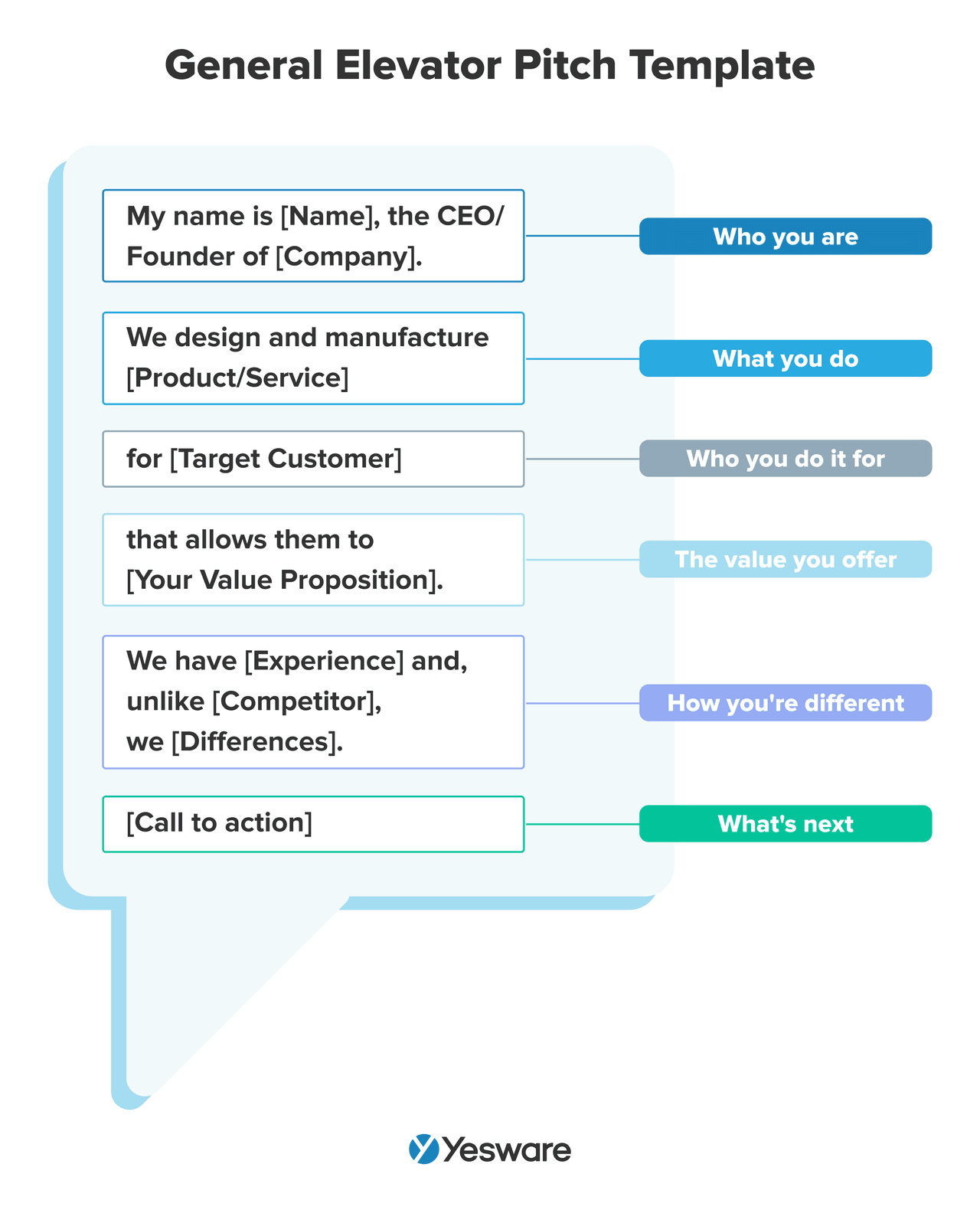 Your elevator pitch should include these essential elements.
Your elevator pitch should include these essential elements.
- Who you are: Provide a brief introduction of who you are and what your role is.
- What you do: Explain what your company does/ your company’s mission.
- Who you do it for: Identify your target customer.
- The value you offer: Include a strong value proposition.
- How you’re different: Prove why you’re better than the competition.
- What’s next: Include a call to action.
Elevator Pitch Examples
1. The Validation Pitch
If your business or idea is new and innovative, it can be difficult to pitch its value if people don’t know they need it yet. This is where the validation pitch can help. It essentially links your brand and what you offer to other popular offerings that show there’s a need for it.
The Airbnb pitch below addresses the issue with hotels, the common way to stay overnight when traveling, and sheds light on the increasing willingness of homeowners to offer their space. This is where Airbnb presents its solution.
This example from Airbnb shows this in action:
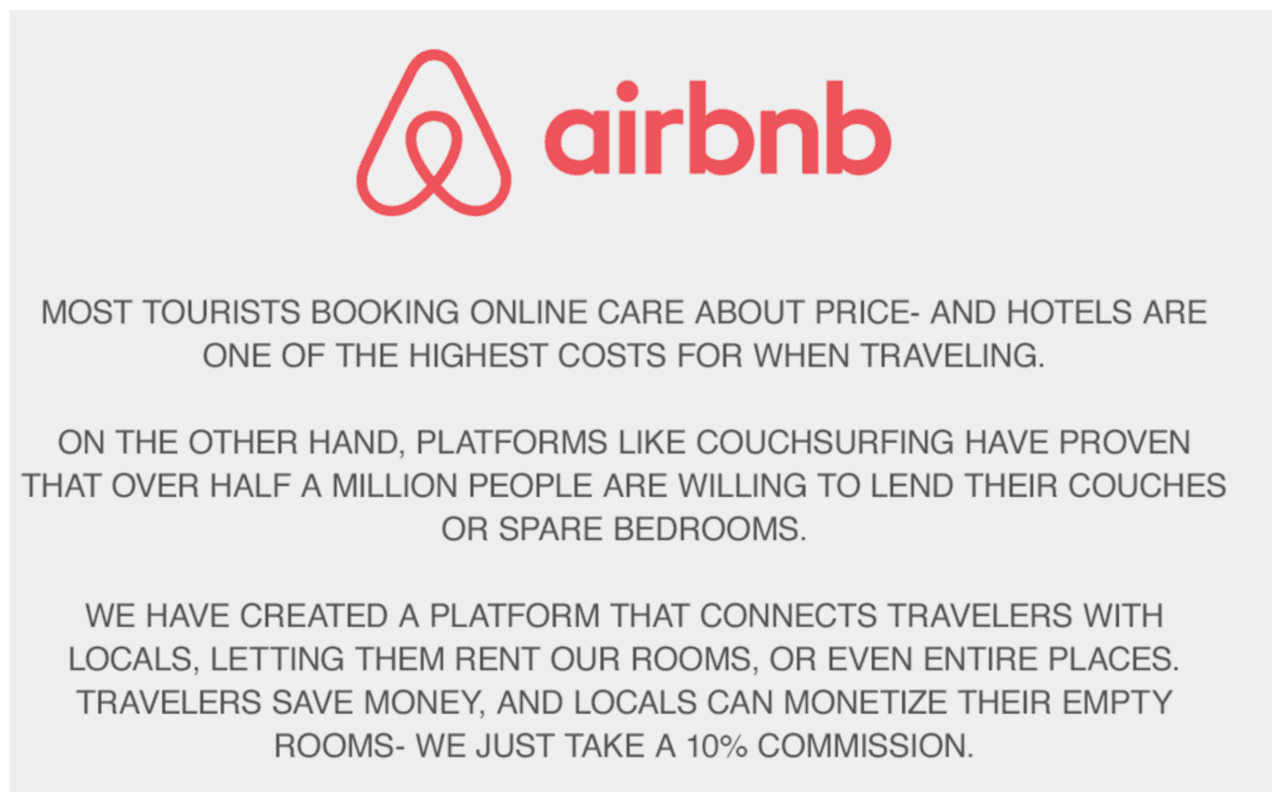
2. The Pain Point Pitch
This kind of pitch is great for hooking the recipient right away. You’re essentially digging straight into a pain that they have and then presenting yourself or your brand as the solution.
The elevator pitch example below does just that – addressing the pain and frustration of reporting and offering a simple solution. Even better, the pitch illustrates how the product works with one simple example.
Let’s take a look:
“Every day, the average marketer spends half an hour putting together reports. Most of the time, these reports are barely glanced at — or worse, ignored altogether. AnswerASAP, which stores all of your data from every tool your business uses, is a game-changer here. Just type what report you want: For example, ‘A bar chart of revenue from every lead source in the past month.’ You’ll get your report in 30 seconds.”
3. The Benefits Pitch
One of the quickest ways to get someone to invest in what you’re selling them is to show them what they’ll get out of it.
Use your elevator pitch to highlight how your business or offering will save people money, time, or something else. It can really help to use numbers here if possible to illustrate your point.
WeWork’s pitch does just that:
“There are 40MM independent workers in the US: consultants, freelancers, and small business owners. Solving office space is tough and expensive, especially in cities like New York. We created the concept of space as a service. We have 20 locations in the city- where people can rent a desk or an office without any of the complications of a traditional lease, effectively saving at least 25% of the cost. They get access to a shared front desk, mailroom, and a community of like-minded people.”
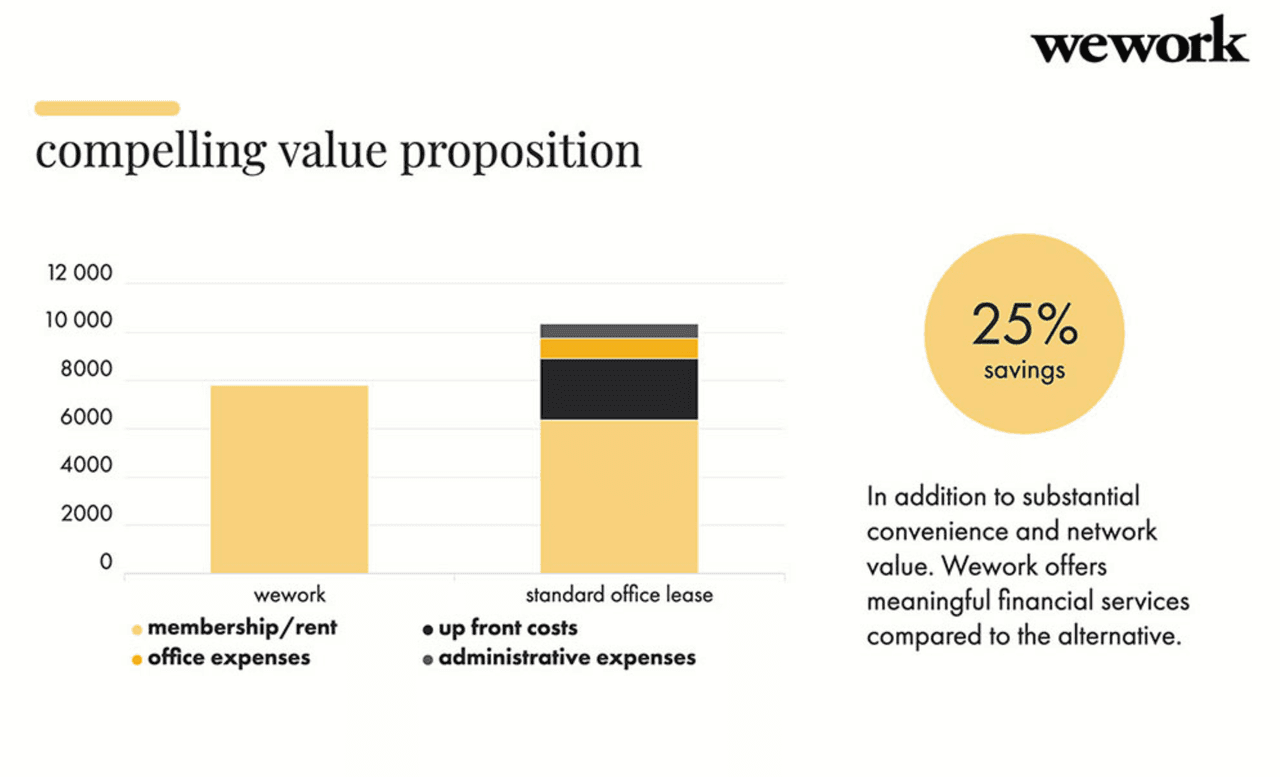
4. The Personable Pitch
You want your pitch to be as personable as possible, with a human voice, and a relatable message.
Also, copywriting 101 teaches us that leading anything with a question instantly hooks the reader or listener. It invites them in and makes them feel like they’re a part of the action. This is why incorporating a question in your elevator pitch can be really effective.
This elevator pitch below is by Matt Bremerkamp from Pressed, a time management app. The pitch is not only personable but immediately draws you in with a relatable question.
Take a look:
“Pressed is an intelligent personal assistant designed to keep people focused on whatever goals they have; like working out, eating healthier, or even just drinking more water.
Want to run a 5k? Pressed will learn that your office isn’t the place to remind you to train. However, it may notice you’ve been at home for a while and may have the time to get out there and break a sweat.”
5. The Take Action Pitch
Ideally, your elevator pitch should invite action in some way. This type of pitch is geared solely towards encouraging the recipient to do something specific once you’ve finished your spiel.
The elevator pitch example below generates a sense of urgency and encouragement to take action.
SEMrush has a great example of this:
“Understand your niche to make better marketing decisions, capture higher page rankings in Google, make valuable new connections and boost your earnings quickly. Don’t waste time guessing what it takes to win valuable search keywords. Work out who is winning. Find out who links to them. Build your own backlinks. Try it out. Research a website right now.”
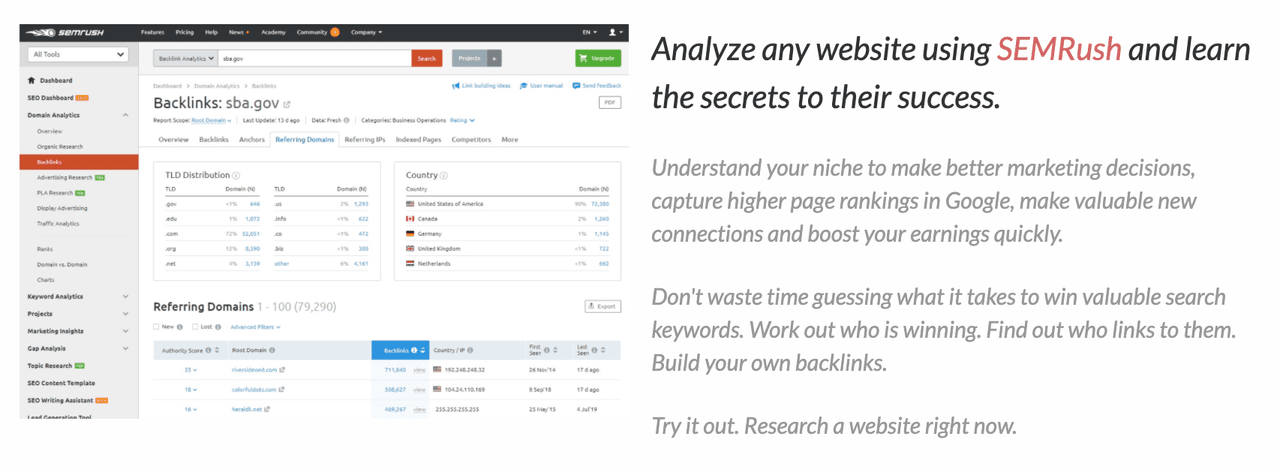
6. The Solutions-Focused Pitch
You don’t have to include everything about you or your business in an elevator pitch. In fact, it can sometimes be more effective to focus on one key problem your recipient might have and spin it around that. At the end, reveal how you can solve that problem.
The elevator pitch example below accomplishes this. The pitch addresses the issue and then demonstrates the solution in a compelling way.
Take a look at JustPark’s elevator pitch:
“Let’s face it. Parking can be a real nightmare. It can be infuriating to find, extremely pricey and by the time you find that spot you would have lost time, petrol, and caused a lot of unnecessary traffic and pollution. Well, there’s an answer, parkatmyhouse.com. We are an awesome little company, backed by an awesome big company called BMW. Now, listen in: You can reserve parking in a private property and save up to 70%. Need to park at a sports match or local station? Sorted. … Just go to parkatmyhouse.com and simply type in where you want to park and what dates. It is that simple.”
Elevator Pitch Tips
1. Grab Their Attention Immediately
Did you know that according to Microsoft, the average human has an attention span of only 8 seconds? 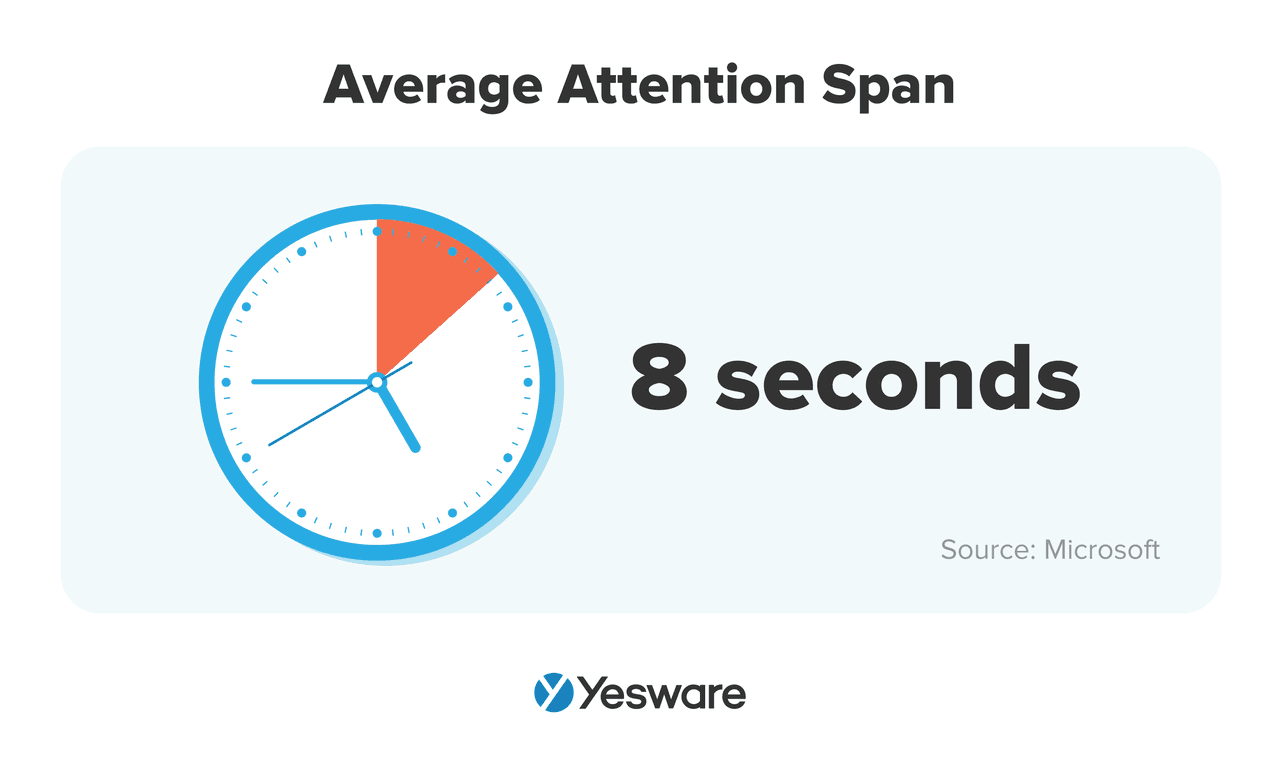 This means your opening needs to be as enticing as possible. You can do this by starting your pitch with a strong stat or an appealing story.
This means your opening needs to be as enticing as possible. You can do this by starting your pitch with a strong stat or an appealing story.
2. Make It Engaging
The last thing you want to do is bore your audience. That would completely defeat the purpose of an elevator pitch.
You want it to be memorable, so inject a bit of personality and make it shine.
What makes your business and your offering different?
Tip: Grab psychology-backed findings below on how to persuade prospects to buy.
 Psychology Principles + 13 Power Words for Winning SalesData-backed psychological principles, nonverbal cues, and persuasive phrases to win more deals.
Psychology Principles + 13 Power Words for Winning SalesData-backed psychological principles, nonverbal cues, and persuasive phrases to win more deals.3. Keep It Structured
“I worked for this sales company for ten years… oh and I also went hiking in Machu Picchu where I met my business mentor… and before the sales company, I did something else…”
Sound familiar?
It’s difficult to create a compact statement covering everything. The key is to keep your elevator pitch structured. Split it into sections and try not to jump around too much – who are you? What do you do? Who do you do it for? What’s your value proposition?
Here’s a simple template you can use to get started:
My name is [Name], the CEO/Founder of [Company]. We design and manufacture [Product/Service] for [Target Customer] that allows them to [Your Value Proposition]. We have [Experience] and, unlike [Competitor], we [Differences]. [Call to action].
4. End With a Question or an Action
It can feel a bit like you’re talking at someone when you give your elevator pitch, so invite them to join in at the end.
Either ask them a question (“is this something you might need help with?”) or take an action – give them a business card or connect with them on LinkedIn.
5. Practice
As they say, practice makes perfect. The more you go over your elevator pitch, the easier it will become to reel it off in a confident way.
Practice your pitch on your friends, your employees, your family. Get feedback. Keep improving.
Then, when presented with a business opportunity, the elevator pitch will effortlessly roll off your tongue.
Conclusion
Your elevator pitch is often the first impression someone will have of you, your brand, or your offering. Getting it right can mean the difference between hooking someone right from the get-go or losing their attention completely.
Based on these elevator pitch examples, play around with the different types of pitches to figure out which one suits what you’re offering best – and try it out on a few people, too.
The most important thing to remember is to keep it short and engaging, but also ensure you highlight the value you offer and who you offer it to.
Get sales tips and strategies delivered straight to your inbox.
Yesware will help you generate more sales right from your inbox. Try our Outlook add-on or Gmail Chrome extension for free, forever!
Related Articles
Casey O'Connor
Melissa Williams
Anya Vitko
Sales, deal management, and communication tips for your inbox

